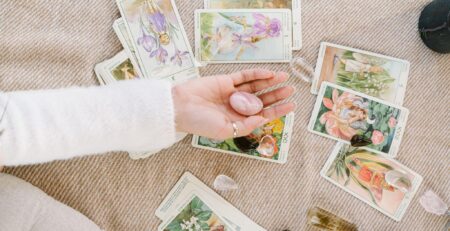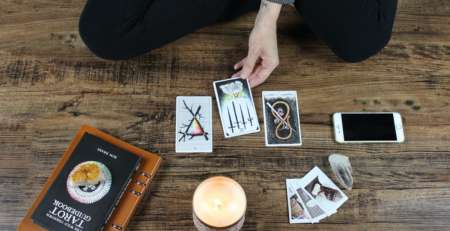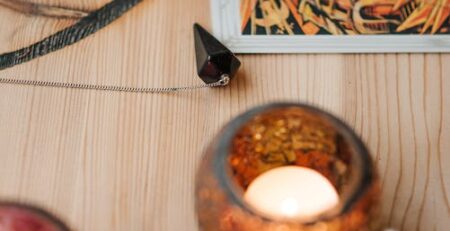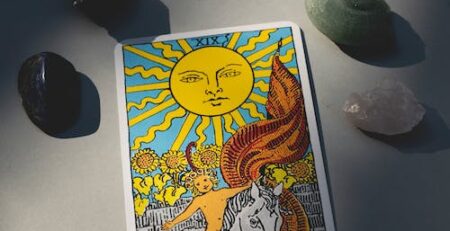Basic Tarot Card Reading: A Holistic Guide By Professionals
Some people like running in the morning, while others like to start their day doom-scrolling through social media. However, most professional futurists, seers, readers, psychics, and telepaths start their day with a tarot reading.
If you are interested in the same, you are in the right place to learn.
Today, we take a holistic approach to the tarot in our basic tarot card reading guide by professionals.
l The Tarot Cards
The tarot deck of 78 decorative cards has two groups of cards, the 22 trump cards known as the major arcana, and the 56 suit cards known as the minor arcana.
In tarot readings, the major and minor arcana cards represent major life themes and minor everyday events respectively. Learning the meaning of each card (and their reversals) is tough, but this does not mean that reading tarot for beginners is impossible.
l Intuition
Professionals say that tarot is for everyone to connect to their intuition. The images on the tarot cards alone can reveal a lot to beginners who don’t know the meanings or aren’t psychic. Despite every professional having their own version of what they consider a tarot card reading guide, they all agree that it is a personal journey for everyone.
l Books & Meanings
While some decks come with their own tarot card reading guide, this isn’t always the case. Regardless, you’ll find plenty of tarot reading books for beginners along with some of the best tarot reading books of all time online.
Get yours from a trusted e-commerce platform like this one. However, professionals say that while these books provide useful meanings of tarot cards, you should trust yourself more. Spend time with each tarot card and write down your thoughts and impressions about it in a notebook, before you turn to tarot reading books for meanings.

l Learn Through Readings
According to professionals, the only good way to learn the tarot is through readings. Conduct readings for yourself, your friends, or even people who are not around.While remembering the meanings of tarot cards is important, you must also learn to connect them.
Gain intuition on a deeper level by understanding how the cards in a spread influence each other. It can be tough for beginners to be unbiased for their own readings, so keep an open mind.
l Formulating Questions
Formulate your question before you pull out your tarot deck. Think about what you really want to learn about an aspect of your life. Professional say its best to avoid “yes or no” and “will…” questions entirely, especially as a beginner. Instead formulate meaningful “how” and “what” questions before you start.
l Choose a Spread Before Shuffling
Almost every tarot card reading guide recommends to chose a spread before you shuffle. Professionals say that the cards only have meaning in the context of the spread, which means you must relate them to their position. There are plenty of spread to choose from, regardless of whichever you choose, make your decision before shuffling the deck.

l Shuffle With Intent & Stop When You’re Ready
There are many ways to shuffle a deck of cards, and professional say that the right way to shuffle is the way you feel is right. They recommend closing your eyes, clearing your mind, and focusing on the question as you shuffle.
Follow your intuition on when to stop shuffling. The deck is ready when you are. If the reading is for someone else, you can even have them shuffle the deck if you want. Or you may let them cut the deck and choose where to start.
While some tarot card reading guides may tell you otherwise, professionals say that there is nothing wrong with doing what feels right in the moment.
l Reversals Are Optional
Despite sometimes having opposing meanings, professionals say that reversals are optional and open to interpretations.
Most professionals use them in relation to the spread, but beginners may overlook reversed cards altogether, as it means learning an additional 78 meanings. These are often modified meanings of the original, but they mostly bring negativity to the deck.
This is because almost every tarot card reading guide says that good cards turn bad in reversals, and bad cards turn differently complex, or worse.
l Record Your Readings
You should track your spreads and readings in a tarot journal. It helps you track progress and see the teachable changes along the way. You learn about the things that came true, the things that don’t, how long it takes for them to come true, etc.
There’s a lot to learn and discover, which is why even professionals maintain a journal for their readings.

Final Thoughts
We hope our basic tarot card reading guide for beginners helps you start your tarot journey with the right guidance. We were careful to consult professionals and come up with the most holistic, yet accurate reading guide for you.
If you are interested in learning more, or if you want to purchase some of the best tarot books of all time, including tarot reading books for beginners, please visit our website today.













Leave a Reply